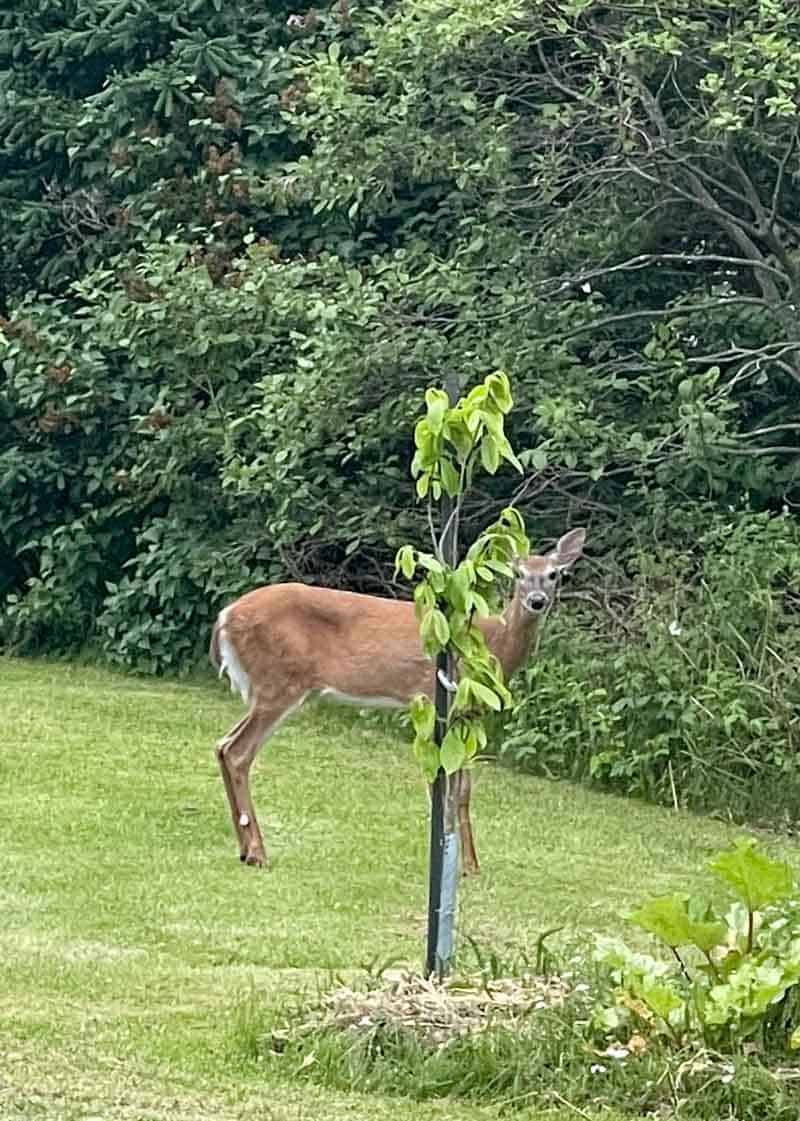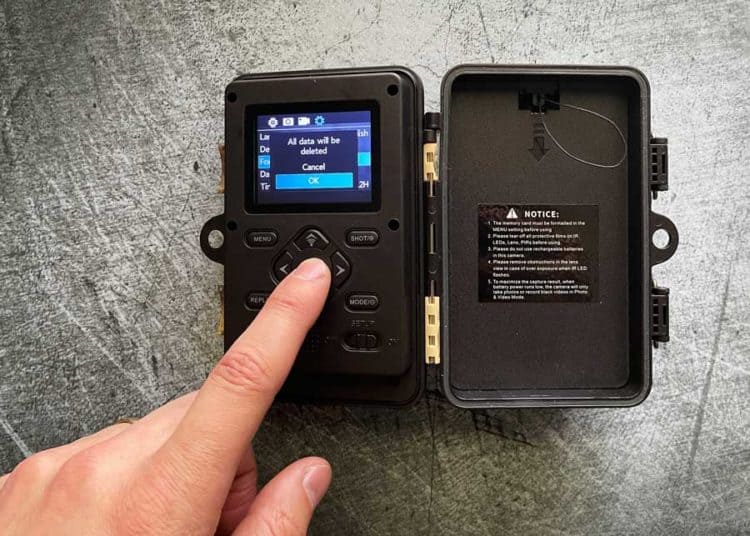Do Trail Cameras Scare Deer? Can They See IR Light? 5 Things to Know
Animal lovers and hunters love trail cameras for viewing and determining animal routines and feeding spots. But deer can be easily spooked by sounds or flashing lights. And because many trail cameras use a flash and make an audible click whenever it takes photos, many wonder if they are doing more harm than good.
Trail cameras can scare deer. For example, the visual placement, attachment methods (strap vs paracord), type of flash (white, red, or black), shutter click sound, and human scent can all spook a deer. And deer see IR light, which will spook them more often than white or black flash trail cameras.

This article is part of our series about how to use a trail camera. How can you reduce the effect of trail cameras on deer? And which flash type is best so as to not spook a deer? Let’s find out more.
Do Trail Cameras Scare Deer?
The short answer is that trail cameras do not necessarily scare away deer, although they may cause some deer to become wary of their surroundings.
It is important to remember that deer are cautious animals and can notice the presence of a trail camera just like a human. If a deer feels threatened by the presence of a trail camera, it may choose to move away from the area.
You might even have footage of a deer running away from your camera, once it noticed it there.
5 Ways to Prevent Scaring Deer With Your Trail Camera
- Visual Placement: Try placing your camera on a multi-trunk tree, where you can mount it in a recessed area. This will help conceal the camera from approaching deer.
- Attachment Methods: Rather than use the provided straps, consider using parachute cord. This will blend better and be less likely to catch the eye of deer as they pass by. Consider getting a matching color cord, to better camouflage against the tree trunk.
- Flash Type: You can choose from many flash types. And while some will affect deer more than others, this is actually a rather minor factor.
- Shutter Sound: The click of the shutter/trigger of the trail camera is minor but could be enough to spook a deer. The more silent the area (lack of wind, running water, etc), the worse the sound could affect the wildlife.
- Human Scent: When setting up the camera, you’ll probably take precautions (like wearing gloves). But did you know that visiting your camera location too frequently is the biggest factor in scaring deer away?
Pro Tip: Set up your camera, and then leave it. Leave it for many weeks, or even months if possible. Avoid the temptation to check in every few days to see what passed by. Your future footage will thank you.
If you really want to see what’s happening in that location, consider using a cellular trail camera. This type of camera will send you images to your phone or to a cloud-based server that you can access from anywhere.
It’s kind of the best of both worlds – see live images without scaring deer with your presence.
Make sure to consider these factors for long battery life.
Do Cell Cameras Scare Deer?
There is an argument that the RF (radio frequency) in cellular trail cameras will spook a deer.
But if your cell camera has a signal to transmit images via cell signal, then there is already a significant amount of RF in the area.
So it is unlikely that a cell camera will scare away bucks and other deer any more than a regular (non-cellular) camera.
Why Wildlife Cameras Spook Deer
Here’s a great explainer video, by Exodus Outdoor Gear, about why cell cameras can spook deer.
Can Deer Hear Game Cameras?
Deer can hear the clicking sound of a trail camera when it goes off. When a trail camera is triggered, it releases a slight clicking sound as the shutter opens and closes. The clicking sound is similar to the sound of two rocks tapping together.
Deer have been known to avoid areas where trail cameras have been placed. This might be because they associate the clicking sound with danger.
The good news is that there are steps you can take to help ensure that deer don’t get spooked by the clicking sound of your trail camera.
One of the simplest methods is to cover the camera body with a dark cloth or camouflage material. This will help muffle the clicking sound and reduce the chances of deer detecting it.
You can also use sound-dampening materials further to reduce the clicking sound of the trail camera. This can include foam, rubber, or a thick blanket around the body of the trail camera.
Here’s more about hiding your trail camera.
Do Deer See IR Light on Trail Cameras?
Probably the biggest question that comes up when trying to conceal a trail camera from deer, is the flash. If deer can see the flash, it would likely scare them.
So, which type of trail camera is best? White, black, or IR flash on a trail camera?
“After taking hundreds of thousands of trail camera pictures since 1995 using white flash, black flash, and IR trail cameras, I’ve had far more deer react negatively to IR cameras than anything else. However, I feel human scent has a larger impact than any specific type of camera.”
Kip Adams, Chief Conservation Officer at the National Deer Association, on outdoorlife.com

IR Cameras vs. Flash Cameras
Trail cameras come with different methods of producing enough light to take stunning wildlife photos.
Flash trail cameras are typically equipped with an LED flash, which provides a bright light when triggered. This flash can help capture clear images of wildlife in the dark and can also help deter the animals from approaching the camera.
IR trail cameras use infrared light to capture images at night. This light is generally invisible to the human eye. And while most animals aren’t disturbed by it, some will see it. The best type of flash will depend on the type of animal you want to film.
Here are my picks for the best trail cameras for wildlife footage.
Here’s more about how to improve the night footage from your trail camera.
How Do Deer See?
Deer have a wide field of view, allowing them to spot movement quickly in the forest. In addition, they have a reflective layer at the back of the eye that helps them see in near darkness called the tapetum lucidum. The tapetum lucidum reflects light through the retina to give them a better view of its surroundings.
The tapetum lucidum also aids deer in seeing things at night. In addition, the layer allows them a better view of their surroundings in low-light situations.
Here’s a great guide, breaking down how whitetail deer see.
But besides that reflective layer in their eyes, deer also possess excellent depth perception and color vision, which help in distance viewing and spotting predators.
Here’s more about how deer stay warm and what deer eat in the winter.
Trail cameras are an excellent addition to any hunter’s arsenal. While the flash and sounds of trail cameras can spook deer, they can also provide valuable intel on how deer live in an area ripe for hunting.
Your turn
What has worked for you? I would love to hear about your setup and settings for filming deer with a trail camera without spooking them.






